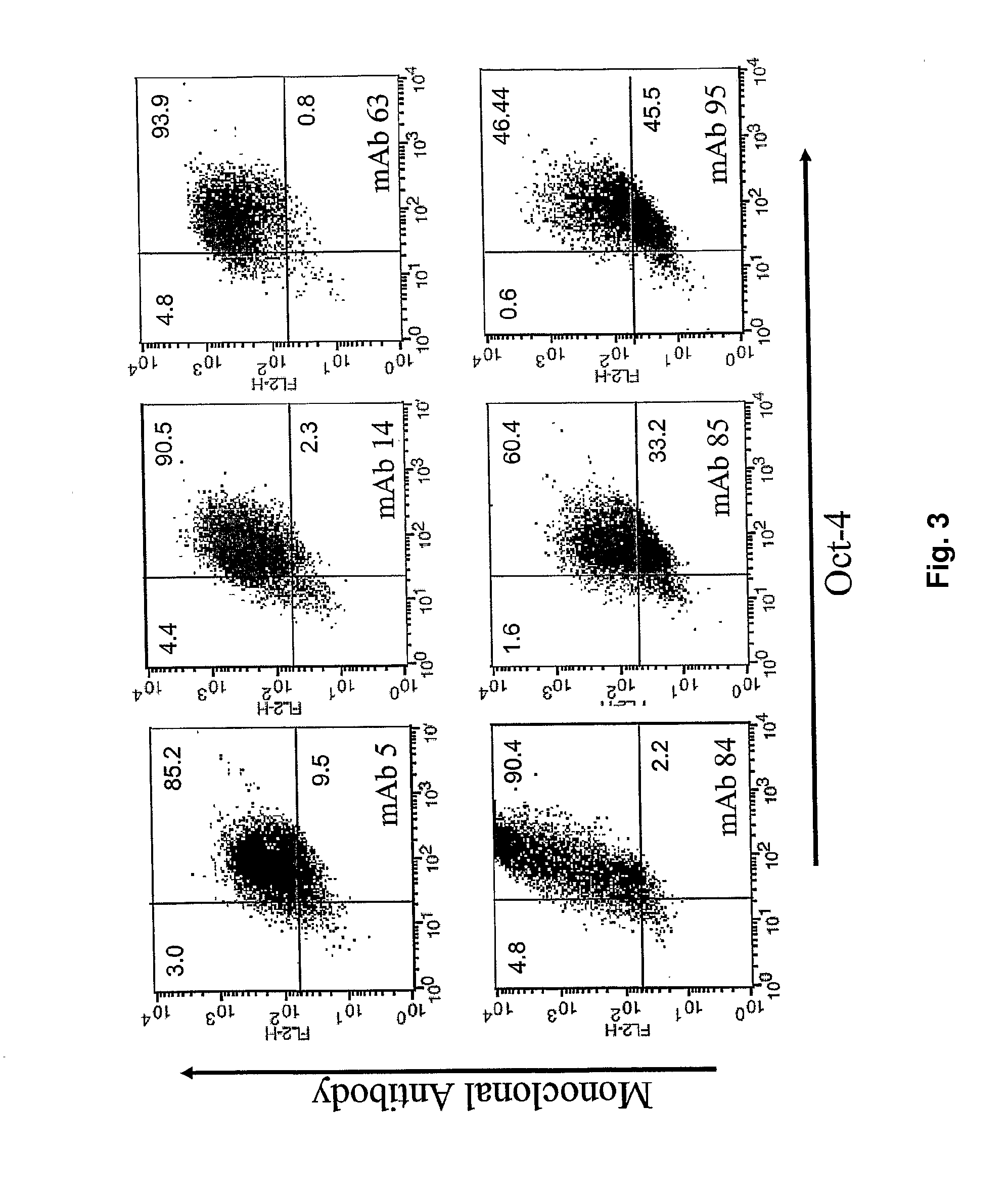Human embryonic stem cell methods and podxl expression
a embryonic stem cell technology, applied in the field of human embryonic stem cell methods and podxl expression, can solve the problems of far outweighing the available supply of transplantable tissues and organs
- Summary
- Abstract
- Description
- Claims
- Application Information
AI Technical Summary
Benefits of technology
Problems solved by technology
Method used
Image
Examples
example 1
Monoclonal Antibody Targeting Podocalyxin-Like Protein Binds and Kills Undifferentiated Human Embryonic Stem Cells
[0093]Introduction
[0094]Human embryonic stem cells (hESC), derived from the inner cell mass of blastocysts, are pluripotent stem cells that have the ability to proliferate indefinitely in vitro in the undifferentiated state. Under the appropriate conditions, hESC can also be differentiated in vitro and in vivo to cell types representative of all three germ layers (mesoderm, endoderm and ectoderm). Morphologically, the cells have a high nuclear to cytoplasmic ratio and grow as distinct colonies. They also express high levels of alkaline phosphatase, telomerase and the transcription factors Oct-4 and Nanog [1-4]. Routinely, hESC are characterized by the expression of cell surface markers, including stage-specific embryonic antigens (SSEA)-3 and SSEA-4, tumor rejection antigen (Tra)-1-60 and Tra-1-81. However, these surface antigens are not unique to hESC and have been prev...
PUM
| Property | Measurement | Unit |
|---|---|---|
| temperature | aaaaa | aaaaa |
| temperature | aaaaa | aaaaa |
| volume | aaaaa | aaaaa |
Abstract
Description
Claims
Application Information
 Login to View More
Login to View More - R&D
- Intellectual Property
- Life Sciences
- Materials
- Tech Scout
- Unparalleled Data Quality
- Higher Quality Content
- 60% Fewer Hallucinations
Browse by: Latest US Patents, China's latest patents, Technical Efficacy Thesaurus, Application Domain, Technology Topic, Popular Technical Reports.
© 2025 PatSnap. All rights reserved.Legal|Privacy policy|Modern Slavery Act Transparency Statement|Sitemap|About US| Contact US: help@patsnap.com



